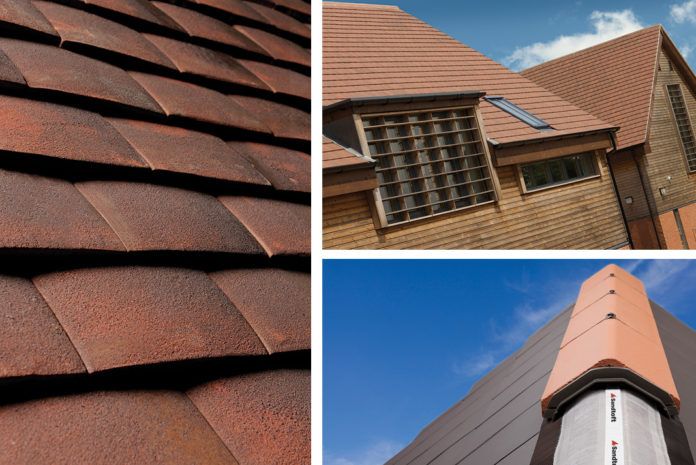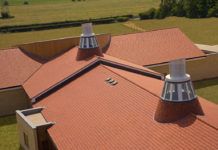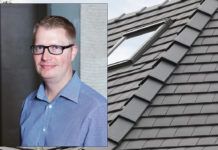Richard Bishop, category manager for roof at Wienerberger, tackles the most common questions that they receive regarding fixings for pitched roofs.
How should the tiles on my roof be fixed?
BS 5534, the Code of Practice for Slating and Tiling states that all single lapped interlocking tiles must be mechanically fixed, and perimeter tiles (edge tiles) should be mechanically fixed using a minimum of two fixings.
Generally, roof tile mechanical fixings are a nail or screw at the tile head and a clip at the tail. BS 5534 allows the use of suitable adhesive as a second fix where it is not possible to use two mechanical fixings. The standard recommends that all ridge and hip tiles are mechanically fixed for structural and safety reasons and to reduce future maintenance.
The cost to the roofer to clip tiles when installing a roof can be significantly greater than simply nailing the tiles because of the extra time, labour and cost of the clips. Therefore, roofers are keen to reduce costs and manufacturers are equally keen to improve clip design to make them cheaper, faster and easier to install, whilst improving performance; i.e. durability, reliability and greater resistance against wind uplift.
Remember to always use the clips approved by the tile manufacturer, as they will issue fixing specifications based on the test values of their particular clips. The consequences of not using the correct clips can mean a roof that does not comply with British Standards, is not guaranteed by the manufacturer or may not be covered by building insurance. Use of tile manufacturer tile clips also ensures that the clips used have the necessary quality and durability when exposed on a roof in the UK climate, which may not always be the case if clips from other sources are used.
Online tools such as Wienerberger’s FIXSPEC allow users to input data about their project to calculate a free fixing specification based on the British Standard for Slating and Tiling requirements.
What are the benefits of using dry fix systems?
“BS 8612: Dry-fixed Ridge, Hip and Verge Systems for Slating and Tiling” is the British Standard which sets minimum requirements for pitched roof dry fix systems for the first time. Dry fix systems offer a maintenance free solution and consistent, attractive finish as an alternative to mortar bedding.
One of the biggest problems with mortar is that it can be damaged by rain and frost before it has time to set. As soon as a dry fix system is installed, it is ready to face the elements. Dry fix systems can also be installed in all weather, unlike mortar which needs dry conditions.
The mechanical fixings used for BS 8612 compliant dry fix systems are rain resistant and will also withstand the highest wind loads a roof is ever likely to encounter. Some dry verge systems can be regarded as one of the roof tile fixings, so the roof tile manufacturer should be consulted regarding the suitability of the dry verge as a secondary fixing.
I would prefer to use mortar bedding to ridges, hips, verge etc. Is this still allowed?
Since the BS 5534 British Standard for Slating and Tiling was introduced in 2014, which stipulated that mortar alone could not be used to fix tiles on a roof, dry fix products have boomed in popularity. However, mortar bedding is still acceptable providing that tiles/ridges/hips are mechanically fixed in addition to the use of mortar.
Be aware that no matter how well a contractor installs a mortar bedded verge, ridge or hip, eventually the elements and natural building settlement will damage the mortar, making it ineffective. It also has a limited lifespan and requires regular maintenance because it will deteriorate in time through natural weathering.
A dry fix ridge or hip system and even visible screws or nails may not be appropriate when using very traditional materials such as, for example, handmade clay plain tiles or clay pantiles. Heritage products are often exactly replicating was on a roof previously, which tend to be traditional roof tile designs that were not mechanically fixed at all.
BS 5534 does acknowledge that it can be difficult to find a practical or acceptable aesthetic way to mechanically fix tiles on the roof of some listed buildings, so allows the use of hydrated and hydraulic lime when using mortars for heritage work. For projects such as these, all the parties involved (client, architect, contractor and insurer) may agree to a traditionally constructed roof where the ridge and hip tiles are mortar-bedded without mechanical fixings.




